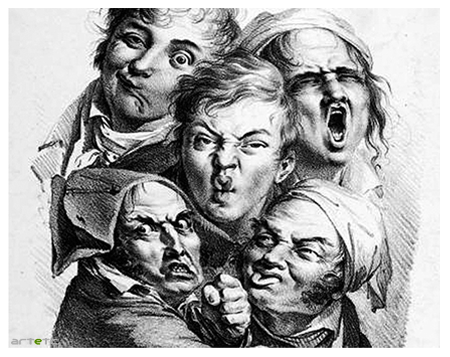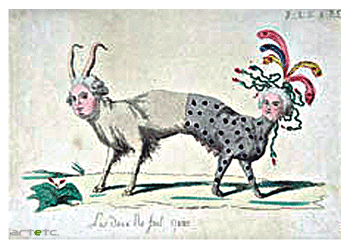- Editorial
- Shibu Natesan Speaks on Protest Art
- Rising Against Rambo: Political Posters Against US Aggression
- Transient Imageries and Protests (?)
- The Inner Voice
- Bhopal – A Third World Narrative of Pain and Protest
- Buddha to Brecht: The Unceasing Idiom of Protest
- In-between Protest and Art
- Humour at a Price: Cartoons of Politics and the Politics of Cartoons
- Fernando Botero's Grievous Depictions of Adversity at the Abu Ghraib
- Up Against the Wall
- Rage Against the Machine: Moments of Resistance in Contemporary Art
- Raoul Hausmann: The Dadaist Who Redefined the Idea of Protests
- When Saying is Protesting -
- Graffiti Art: The Emergence of Daku on Indian Streets
- State Britain: Mark Wallinger
- Bijon Chowdhury: Painting as Social Protest and Initiating an Identity
- A Black Friday and the Spirit of Sharmila: Protest Art of North East India
- Ratan Parimoo: Paintings from the 1950s
- Mahendra Pandya's Show 'Kshudhit Pashan'
- Stunning Detours of Foam and Latex Lynda Benglis at Thomas Dane Gallery, London
- An Inspired Melange
- Soaked in Tranquility
- National Museum of Art, Osaka A Subterranean Design
- Cartier: "Les Must de Cartier"
- Delfina Entrecanales – 25 Years to Build a Legend
- Engaging Caricatures and Satires at the Metropolitan Museum
- The Mesmerizing World of Japanese Storytelling
- The Metropolitan Museum of Art Exhibiting Lyrical Visions: Paintings from North India
- Random Strokes
- Asia Week at New York
- Virtue of the Virtual
- What Happened and What's Forthcoming
- Art Events Kolkata, March – April 2012
- Mumbai Art Sighting
- Art Bengaluru
- Delhi Dias
- Preview, April, 2012 – May, 2012
- In the News, April 2012
- Cover
ART news & views
Engaging Caricatures and Satires at the Metropolitan Museum
Issue No: 28 Month: 5 Year: 2012
New York. Consisting mostly of works from the Metropolitan Museum's collection in its Department of Drawings and Prints, the exhibition, Infinite Jest: Caricature and Satire from Leonardo to Levine, which started on September 13, 2011, includes sheets by artists such as Leonardo da Vinci, Eugène Delacroix, Francisco de Goya, Henri de Toulouse-Lautrec, and Enrique Chagoya alongside works by artists more often associated with visual humour, such as James Gillray, Thomas Rowlandson, Honoré Daumier, Al Hirschfeld, and David Levine. Many of these drawings and prints have never been exhibited and are little known. The drawings will be displayed at the Galleries for Drawings, Prints, and Photographs and will be on view till March 4, 2012. The show explores humorous imagery from the Italian Renaissance to the present.
The title of the exhibition, Infinite Jest, is derived from Shakespeare's Hamlet. Shakespeare's play is quoted in a Civil War print from the 1864 presidential campaign caricaturing Democratic candidate General George McClellan as Hamlet and his Republican opponent, President Abraham Lincoln, as the exhumed skull from the play's gravedigger's scene, using the famous line: “I knew him, Horatio; a fellow of infinite jest.”
The exhibition is divided into four sections and begins with the building blocks of caricature, a genre that artists employed, exaggerating faces and physiques, showing people as animals and objects, and displaying humorous figures in processions. Caricature distorts human physical characteristics and can be combined with various kinds of satire to convey personal, social, or political meaning. The form took shape in Europe when Leonardo da Vinci's drawings of grotesque heads were copied by followers and distributed as prints.
 Highlights of this section include Leonardo da Vinci's Head of a Man in Profile, Facing Left, together with caricature drawings by Tiepolo and Francois-André Vincent, as well as a wide range of prints by Louis Léopold Boilly, James Gillray, and even Nadar, who was an active caricaturist.
Highlights of this section include Leonardo da Vinci's Head of a Man in Profile, Facing Left, together with caricature drawings by Tiepolo and Francois-André Vincent, as well as a wide range of prints by Louis Léopold Boilly, James Gillray, and even Nadar, who was an active caricaturist.
The second section of the exhibition examines social satire expressed in works dedicated to eating and drinking, gambling, male and female fashion, art, and crowds. The 18th and 19th centuries are known as the golden age of caricature and satire, with William Hogarth, Gillray, Rowlandson, and George Cruikshank producing lively examples in Britain, and Honoré Daumier and Boilly doing the same in France. Extreme fashion provided satirists with an ever-changing source of humour beginning in the 1760s and a selection of sartorial caricatures are on view.
 Politics are the focus of the exhibition's third section, featuring prints produced in response to the American and French revolutions, to Napoleon's conquest of Europe, and to French, Mexican, and American politics of the 19th and early 20th centuries, including the American Civil War. Rare anonymous satires produced in France when censorship eased in the 1790s are on view, accompanied by famous designs by Gillray and Daumier.
Politics are the focus of the exhibition's third section, featuring prints produced in response to the American and French revolutions, to Napoleon's conquest of Europe, and to French, Mexican, and American politics of the 19th and early 20th centuries, including the American Civil War. Rare anonymous satires produced in France when censorship eased in the 1790s are on view, accompanied by famous designs by Gillray and Daumier.
The exhibition ends with a group of caricatures of notable people from the 19th to the 21st century. Images in this section include Al Hirschfeld's Americans in Paris from 1951. The most recent piece in the exhibition is Enrique Chagoya's The Headache, A Print after George Cruikshank from 2010.
Infinite Jest is organized by Constance C. McPhee, Associate Curator, and Nadine M. Orenstein, Curator, both of the Metropolitan Museum's Department of Drawings and Prints.